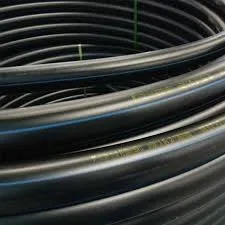Dec . 04, 2024 11:21 Back to list
Exploring the Versatility and Applications of HDPE Boards in Modern Industries
Understanding HDPE Board Properties, Applications, and Benefits
High-Density Polyethylene (HDPE) board is a versatile material that has become increasingly popular across various industries due to its unique properties and benefits. As a thermoplastic made from petroleum, HDPE is known for its high strength-to-density ratio, making it an excellent choice for applications requiring durability and resilience. In this article, we will explore the characteristics, applications, and advantages of HDPE boards.
Properties of HDPE Board
One of the most remarkable properties of HDPE board is its durability. The material is resistant to impact, chemicals, and UV radiation, which significantly extends its lifespan, even in harsh environmental conditions. HDPE boards do not rot, warp, or splinter like traditional wooden materials, making them a more sustainable choice for long-term use.
Another notable feature of HDPE is its low moisture absorption. This property allows HDPE boards to perform exceptionally well in wet or humid environments. The material does not promote bacterial growth or mold, making it ideal for applications in the food industry or areas where sanitation is critical.
Moreover, HDPE is lightweight yet strong, allowing for easy handling and installation. Despite being lightweight, HDPE boards can support heavy loads, making them suitable for various structural applications. They can be easily cut, shaped, or welded, providing flexibility in design and use.
Applications of HDPE Board
The applications of HDPE boards are vast and varied. In the construction industry, they are commonly used for building materials such as siding, piping, and as formwork for concrete. The boards' moisture resistance and strength make them a reliable choice for both indoor and outdoor projects.
In the agricultural sector, HDPE boards are frequently used for flooring, wall cladding, and livestock environments due to their resistance to harsh chemicals and easy cleaning properties. These boards help maintain hygiene in barns and animal housing, thus promoting animal health.
hdpe board

HDPE boards also find applications in the manufacturing of marine products, including docks, boat ramps, and even parts for marine vessels. Their resistance to saltwater and marine organisms means they can withstand the demanding conditions of aquatic environments without deteriorating.
Additionally, they are used in playground equipment, waste bins, and outdoor furniture, where durability and resistance to weather elements are critical. This material is increasingly being utilized in signage, due to its ability to withstand exposure to sunlight and moisture without fading.
Advantages of HDPE Board
The benefits of HDPE boards extend beyond their physical properties. Environmentally, HDPE is recyclable and can be repurposed into new products, minimizing waste and promoting sustainability. This eco-friendly aspect is increasingly important in today's market, where consumers are prioritizing sustainable materials.
Cost-effectiveness is another significant advantage. While the initial investment for HDPE boards may be higher compared to traditional materials, their longevity and low maintenance requirements result in reduced lifecycle costs. This can lead to substantial savings over time.
In terms of aesthetics, HDPE boards are available in a variety of colors and finishes, enabling them to blend seamlessly into various design themes. This versatility allows architects and designers to utilize them creatively in their projects while ensuring durability.
Conclusion
In summary, HDPE boards are a remarkable material that combines durability, versatility, and sustainability. Their unique properties make them suitable for a range of applications across industries, from construction to agriculture and beyond. As awareness of environmental impact grows, materials like HDPE are likely to become increasingly favored in modern manufacturing and design. Understanding the capabilities and benefits of HDPE boards is essential for making informed choices in material selection, ensuring both quality and sustainability in various projects.
-
PVC Grey Sheet for Extraction: Chemical Resistant & Durable
NewsAug.19,2025
-
Durable PVC Pipe Fittings for Plumbing & Irrigation Needs
NewsAug.18,2025
-
HDPE Steel Belt Reinforced Spiral Corrugated Pipe | High Strength
NewsAug.17,2025
-
HDPE Pipe Fittings: Durable, Leak-Proof Solutions
NewsAug.16,2025
-
Premium CPVC Sheet: High-Temp & Chemical Resistant Solutions
NewsAug.15,2025
-
Durable PPR Pipe for Hot & Cold Water Systems - Easy Install
NewsAug.14,2025

